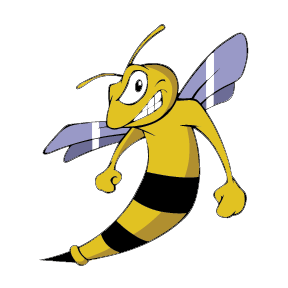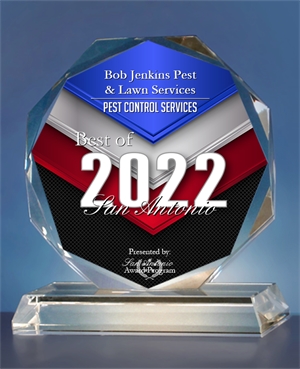Stinging Pests
 Bees, Yellow Jackets, Wasps, Hornets, Mud Daubers and Scorpions all carry a powerful sting. Most of the time, these stinging pests do not deliver a deadly sting, but they are powerful enough to cause swelling and various skin reactions. Most of the stinging insects we are familiar with have some type of wings. In San Antonio, the most prevalent source of stings come from the Yellow Jacket Wasp. These usually build paper nests around the eves of our homes and patio’s and when we go outside, they perceive our presence as an attack on their home, so they try to defend them by stinging us. Often times we might even be trimming our bushes or trees and we disturb their nest and they attack with force.
Bees, Yellow Jackets, Wasps, Hornets, Mud Daubers and Scorpions all carry a powerful sting. Most of the time, these stinging pests do not deliver a deadly sting, but they are powerful enough to cause swelling and various skin reactions. Most of the stinging insects we are familiar with have some type of wings. In San Antonio, the most prevalent source of stings come from the Yellow Jacket Wasp. These usually build paper nests around the eves of our homes and patio’s and when we go outside, they perceive our presence as an attack on their home, so they try to defend them by stinging us. Often times we might even be trimming our bushes or trees and we disturb their nest and they attack with force.
Bees are very common around our homes during the Spring when our flowers are blooming as these stinging insects are just trying to gather pollen for the nest. Honey Bees and the Africanized Killer Bees are very hard to tell apart. Generally the only way to tell them apart is by measuring their length. We don’t recommend trying to catch one as the Africanized Bee is a very dangerous stinging insect and they have been known to chase their target for up to a quarter of a mile. Africanized Bees can become very excited and aggressive and will typically attack in a group. This is why this type of stinging pest is dangerous. You don’t get bit by one or two. They send the full army after you. If you suspect your San Antonio home or yard has been invaded by Africanized “killer” Bees, please call an experienced exterminator out as soon as possible. No one is safe from these stinging insects.
Mud Daubers are another form of wasps frequently found around our homes. These insects look menacing, but they very seldom sting. They are more of a nuisance than anything else, but their habit of building their mud nests around our home and the big stinger they seem to carry on a big stick is enough to make us want to rid them from our home and yard.
Scorpions and Ants are also considered stinging pests, especially the Red Imported Fire Ant. This is another insect that has a tendency to attack with the whole colony. Very seldom will you get stung by one fire ant. You generally will get stung numerous times when you inadvertently step on their nest. Fire Ants have been known to bring down large animals like cows when they don’t realize they’ve stepped into a large nest of these ants. Fire Ants are an invasive species that can be found in San Antonio and throughout the Southern portion of the United States.
If you have problems around your home with any of these stinging pests, call a San Antonio professional exterminator to eliminate this problem.
- Mosquito Control – Home Insect Repellent
- Scorpion Control in San Antonio
- Pest Control Services – Rodents
- Have Insects Been Buggin.. You
- Termite Inspections – Termite Treatment and Control
- Carpenter Ants and the Places They Hide
- Residential Pest Control – Indoors and Outdoors
- MOSQUITOES ARE A HAZARD TO YOUR PET’S HEALTH TOO
- Identification, Facts & Control of the House Fly
- Texas, San Antonio Termite Control
- How To Get Rid Of The June Bug
- Pest Control San Antonio – New Braunfels
- Rodent Control in San Antonio
- Methods of Termite Control
- Texas, San Antonio Termite Control
- New Braunfels Pest Control
- Maintenance Tips For Flea And Tick Season
- Helpful Tips On Flea Control and Prevention
- Termite Control And Treatment San Antonio
- Inspect Your Home For Termites This Spring
- Maintenance Tips For Flea And Tick Season
- Gardening Tips To Keep The Pests At Bay This Spring
- What Is Humane Animal Control?
- Stop The Pests: Room By Room Spring Cleaning Guide
- Summer Pest Control For Common Pests














